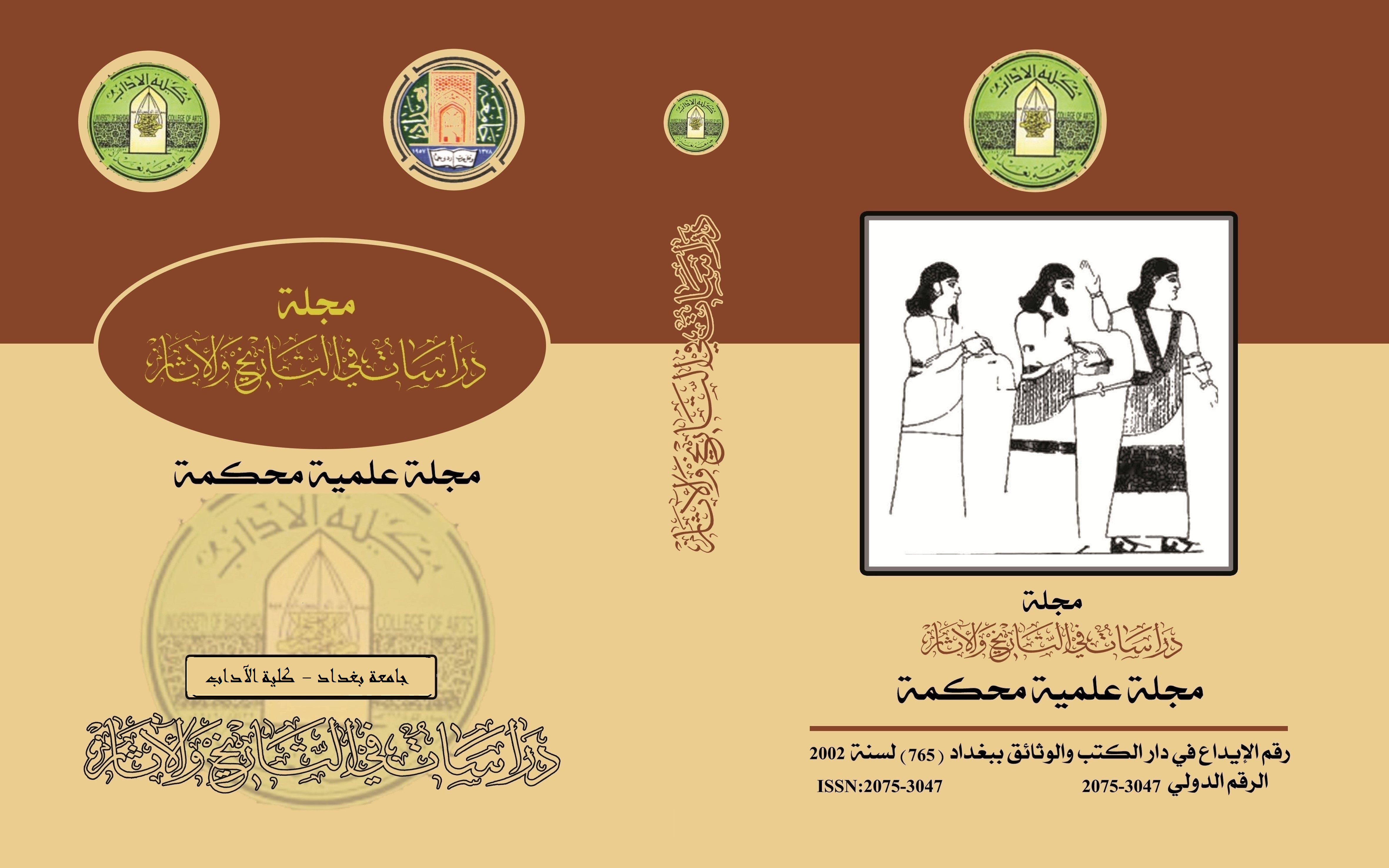الأطماع الأسرائيلية في مضيق باب المندب 1967 - 1995
الكلمات المفتاحية:
أسرائيل، اليمن، أرتيريا، باب المندب، البحر الأحمرالملخص
كانت ومازالت اليمن حاضرة بقوة في أجندة الأطماع الأسرائلية بسبب الموقع الاستراتيجي الذي تتمتع به، والتحكُّم في مضيق باب المندب، والذي يعد بمثابة مجمع الأمن الإقليمي وهمزة الوصل بين الشرق والغرب، وتعززت أطماع أسرائيل بعد وعد بلفور المشؤم عام 1917، والذي منحهم وطناً بديلاً في فلسطين المحتلة بعد قرونٍ من الشتات والتيه، وكانت اليمن قبل صدور الوعد إحدى البلدان المتداولة في أوساط اليهود لإقامة دولتهم الموعودة، لهرطقات دينية تدعي وجود الهيكل السليماني فيها, ويعود التواجد الإسرائيلي في باب المندب إلى ستينيات القرن الماضي، وتحديداً عندما قررت بريطانيا، وعلى وقع ضربات المقاومة اليمنية وتوسع حجم العمليات الفدائية، الرحيل من عدن ومن المحافظات الجنوبية في اليمن, قبل ذلك كانت إسرائيل قد نسجت خيوط العلاقة مع دولة إثيوبيا، واستفادت منها في إيجاد موطئ قدم لها في منطقة جنوب البحر الأحمر، عبر استئجار جزر إثيوبية، أعقبته محاولات التمدد والتوسع للسيطرة على مضيق باب المندب .
أن أهتمام أسرائيل بالوضع في باب المندب والذي يمثل مفتاح الدخول للبحر الأحمر بالنسبة للسياسة الأسرائية ليس بجديد اذ كانت تطرح نفسها دائماً بمثابة الدولة المشاطئة لتلك المنطقة الحيوية من العالم، ولم تكن عملية القرصنة الارتيرية وأحتلال أرخبيل حنيش, الا عملية مشبوهة تقف ورائها أسرائيل كأنذار لليمن ولغيرها بعدم اجراء أية تعديلات في موازين القوى عبر البحر الاحمر حتى تبقى اليد الاسرائيلية فاعلة في تلك المنطقة الحيوية من العالم .
المراجع
أولا : الرسائل والأطاريح
- شيماء طالب عبدالله المكصوصي, السياسة البريطانية تجاه دول البحر الأحمر 1939- 1956, أطروحة دكتوراه غير منشورة, كلية التربية ( أبن رشد), جامعة بغداد, 2002 .
- عبد الكريم مسلم دخل الله الشواورة، الاهمية الستراتيجية لخط الملاحة في المضائق العربية – هرمز – باب المندب – جبل طارق، رسالة ماجستير (غير منشورة)، كلية الاداب، جامعة بغداد، 1983.
- علي سلمان صايل الشيخ عيسى, العلاقات الأسرائيلية – الأرترية وأثرها على الأمن القومي العربي للفترة 1993 – 1999, رسالة ماجستير غير منشورة, كلية العلوم السياسية, جامعة بغداد, 2000.
- ميلود وضاحي, السياسة الخارجية الأسرائيلية تجاه دول أفريقيا ( دراسة حالة القرن الأفريقي 1990 – 2013), رسالة ماجستير غير منشورة, كلية الحقوق والعلوم السياسية, جامعة محمد بوضياف, المسيلية, 2015.
ثانيا: الكتب العربية والمعربة
- أجيه يونان جرجس, البحر الأحمر ومضايقه بين الحق العربي والصراع العالمي, مكتبة غريب, القاهرة, 1979.
- صلاح الدين حافظ, صراع القوى العظمى حول القرن الأفريقي, منشورات المجلس الوطني للثقافة والفنون والأداب, الكويت, 1982.
- عبد المنعم عبد الوهاب وصبري فارس الهيتي، الجغرافية السياسية، دار الكتب، جامعة الموصل، 1989.
- علي نعمة الحلو, الوجود الأمريكي الصهيوني في البحر الأحمر, منشورات النجف الأشرف, 1974.
- محمود نعناعه, أسرائيل والبحر الحمر, مكتبة الخانجي, القاهرة, 1974.
ثالثا: الكتب الأجنبية
- Kraft Joseph,Israel Foreign Policy on the shaies of Bab al- Mandeb, Washinton, 2002.
- Radllof David, Components of Israeli Forelgn polioy and Towards Red sea,M.A thesis,University of North Carollna,2000.
- Mordechai, Bab al- Mandeb the Strategic Balance and Israels Southern Approaches, London, 1999.
- Abir Bell J. Bowyar, Bab al-Mandab Strategic Troubie spot, New York, 1980.
- Campbell John, Ramblings Along the Red sea, the Eritrean Queetion, ,Washinton , 1981.
- Copley Gregory,the Concept of Israel As a Major Red sea, New York, 1990 .
رابعا: البحوث والدراسات
- أمال الشاذلي, الأطماع الأسرائيلية في القرن الأفريقي, السياسة الدولية, ( مجلة),, العدد54, السنة 14, تشرين الثاني, 1978.
- السيد عليوة, سياسة اليمن في البحر الحمر, السياسة الدولية ( مجلة), العدد 54, السنة 14, تشرين الثاني, 1978.
- عبد الزهرة شلش العتابي، "الجغرافية السياسية لمضيق باب المندب"، مجلة كلية التربية الاساسية، الجامعة المستنصرية، ملحق العدد 52، 2008.
- علي الدين هلال, المن العربي والصراع الأستراتيجي في البحر الحمر, المستقبل العربي ( مجلة), السنة الثانية, العدد التاسع, أيلول 1978.
- علي عبود راضي، الاستراتيجية الصهيونية في منطقة القرن الافريقي، الامن القومي ( مجلة)، بغداد، أيلول ، 1991.
- محمد السماك, البحر الحمر صراع عربي - أسرائيلي – أمريكي- سوفيتي, الأسبوع العربي ( مجلة), العدد 32, نيسان 1978.
التنزيلات
منشور
إصدار
القسم
الرخصة

هذا العمل مرخص بموجب Creative Commons Attribution 4.0 International License.
:حقوق الطبع والنشر والترخيص
بالنسبة لجميع البحوث المنشورة في مجلة دراسات في التاريخ والآثار، يحتفظ الباحثون بحقوق النشر. يتم ترخيص البحوث بموجب ترخيص Creative Commons CC BY 4.0 المفتوح ، مما يعني أنه يجوز لأي شخص تنزيل البحث وقراءته مجانًا. بالإضافة إلى ذلك ، يجوز إعادة استخدام البحث واقتباسه شريطة أن يتم الاستشهاد المصدر المنشور الأصلي. تتيح هذه الشروط الاستخدام الأقصى لعمل الباحث وعرضه.
:إعادة إنتاج البحوث المنشورة من الناشرين الآخرين
من الضروري للغاية أن يحصل الباحثون على إذن لإعادة إنتاج أي بحث منشورة (أشكال أو مخططات أو جداول أو أي مقتطفات من نص) لا يدخل في نطاق الملكية العامة أو لا يملكون حقوق نشرها. يجب أن يطلب الباحثون إذنًا من مؤلف حقوق النشر (عادة ما يكون الناشر).
يطلب الإذن في الحالات التالية:
بحوثك الخاصة المنشورة من قِبل ناشرين آخرين ولم تحتفظ بحقوق النشر الخاصة بها.
مقتطفات كبيرة من بحوث أي شخص أو سلسلة من البحوث المنشورة.
استخدم الجداول والرسوم البيانية والمخططات والمخططات والأعمال الفنية إذا لم يتم التعديل عليها.
الصور الفوتوغرافية التي لا تملك حقوق لنشرها.
لا يطلب الإذن في الحالات التالية:
إعادة بناء الجدول الخاص بك مع البيانات المنشورة بالفعل في مكان آخر. يرجى ملاحظة أنه في هذه الحالة يجب عليك ذكر مصدر البيانات في شكل "بيانات من ..." أو "مقتبس من ...".
تعتبر عروض الأسعار القصيرة معقولة الاستخدام العادل ، وبالتالي لا تتطلب إذنًا.
الرسوم البيانية ، الرسوم البيانية ، المخططات ، الأعمال الفنية التي أعاد الباحث رسمها بالكامل والتي تم تغييرها بشكل ملحوظ إلى درجة لا تتطلب الاعتراف.
الحصول على إذن
لتجنب التأخير غير الضروري في عملية النشر ، يجب أن تبدأ في الحصول على أذونات في أقرب وقت ممكن. لا يمكن لمجلة الآداب نشر بحث مقتبس من منشورات أخرى دون إذن.
قد يمنحك مالك حقوق الطبع والنشر تعليمات بشأن شكل الإقرار الواجب اتباعه لتوثيق عمله ؛ بخلاف ذلك ، اتبع النمط: "مستنسخ بإذن من [المؤلف] ، [كتاب / المجلة] ؛ نشره [الناشر] ، [السنة]." في نهاية شرح الجدول ، الشكل أو المخطط.



















